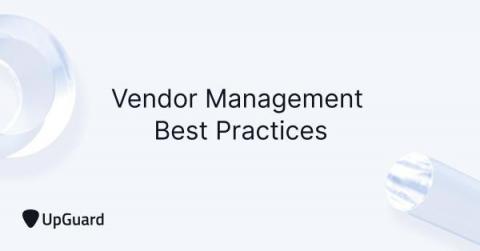Vendor Management Best Practices
Establishing positive vendor relationships is crucial to running a successful business. Nonetheless, vendor management has several moving parts, and you have a lot of things to keep track of. This includes who your third parties are, the services they offer, which internal policies apply to them, and what sensitive data they have access to. Without a strong foundation of vendor management best practices, vendor risks could manifest into failures that could affect business continuity.











